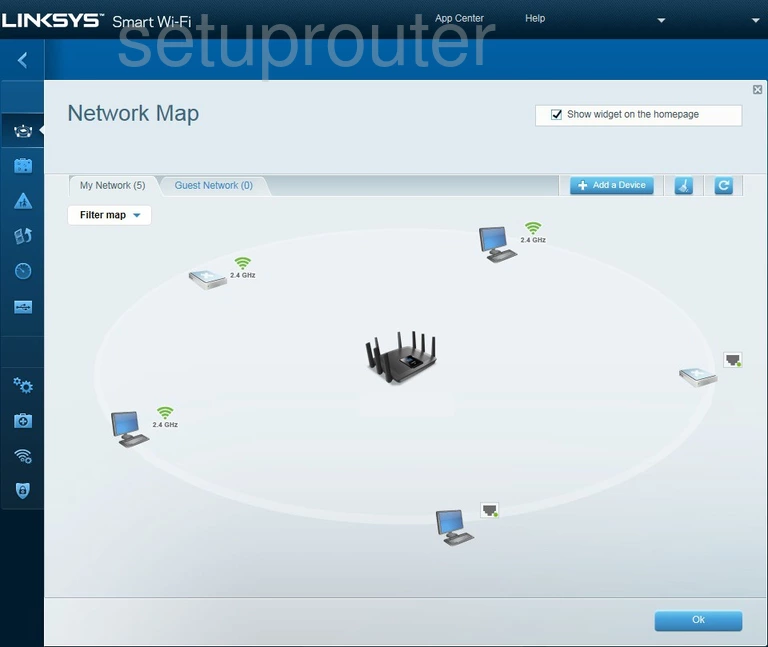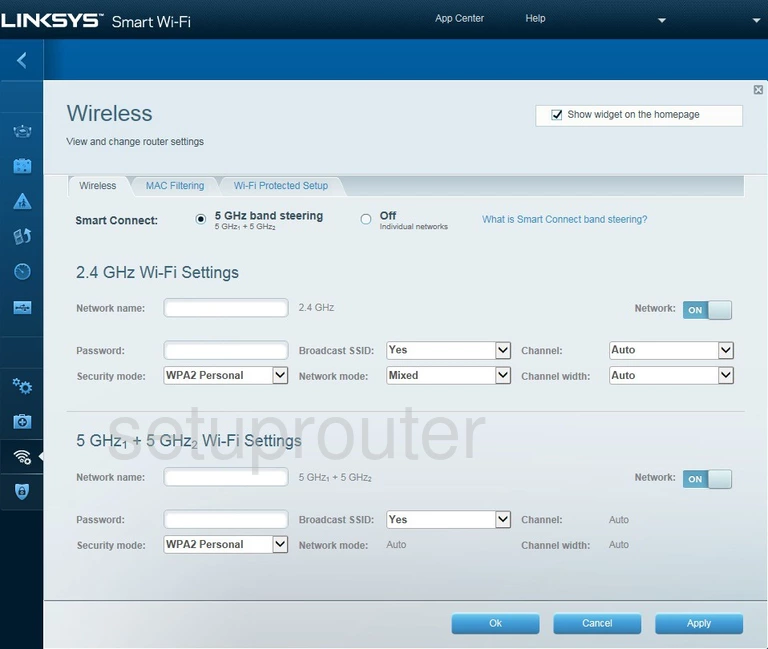The Linksys EA9500 router is considered a wireless router because it offers WiFi connectivity. WiFi, or simply wireless, allows you to connect various devices to your router, such as wireless printers, smart televisions, and WiFi enabled smartphones.
Other Linksys EA9500 Guides
This is the wifi guide for the Linksys EA9500. We also have the following guides for the same router:
WiFi Terms
Before we get started there is a little bit of background info that you should be familiar with.
Wireless Name
Your wireless network needs to have a name to uniquely identify it from other wireless networks. If you are not sure what this means we have a guide explaining what a wireless name is that you can read for more information.
Wireless Password
An important part of securing your wireless network is choosing a strong password.
Wireless Channel
Picking a WiFi channel is not always a simple task. Be sure to read about WiFi channels before making the choice.
Encryption
You should almost definitely pick WPA2 for your networks encryption. If you are unsure, be sure to read our WEP vs WPA guide first.
Login To The Linksys EA9500
To get started configuring the Linksys EA9500 WiFi settings you need to login to your router. If you are already logged in you can skip this step.
To login to the Linksys EA9500, follow our Linksys EA9500 Login Guide.
Find the WiFi Settings on the Linksys EA9500
If you followed our login guide above then you should see this screen.

Once you have finished logging into the Linksys EA9500 router you should see a screen very similar to the one above. To change your WiFi settings click the option in the left sidebar labeled Wireless. Then make sure the Wireless tab is chosen at the top of the page.
Change the WiFi Settings on the Linksys EA9500

The page above is the one you need to end up on.
There are two different frequencies you can choose from. Either 2.4 GHz or 5 GHz. If you live in crowded conditions such as an apartment building you would probably benefit from using 5 GHz. If you live in the suburbs or more rural go ahead and use 2.4 GHz. 5GHz gives you more channels but is a much weaker signal. 2.4 GHz has less channels to choose from but a much stronger signal.
In the network of your choice (2.4 or 5) enter the Network Name first. This is the name you give your network so you can find it later. Make this name unique but avoid personal and router specific data. Learn more in our How to Change your Wireless Name guide.
Below that is the Password. This is the Internet password. It is very important that you create a strong password here. It is recommended that you use at least 14 to 20 characters in this password. It doesn't matter how strong your security system is if you have a easy to guess password. Learn how to create a strong password in our guide titled Choosing a Strong Password.
Under that is the Security mode. The strongest choice available to date is the option of WPA2 Personal. What is this? Find out in our guide called WEP vs. WPA.
If you are interested in changing your channel take a look at the far right side of the section. Find the drop down box labeled Channel and pick your new channel. If you are using 2.4 GHz band you should only choose from channels 1,6 or 11. Interested in learning why? Read our WiFi Channels guide.
That's it, just click the blue Apply button to save your changes.
Possible Problems when Changing your WiFi Settings
After making these changes to your router you will almost definitely have to reconnect any previously connected devices. This is usually done at the device itself and not at your computer.
Other Linksys EA9500 Info
Don't forget about our other Linksys EA9500 info that you might be interested in.
This is the wifi guide for the Linksys EA9500. We also have the following guides for the same router: